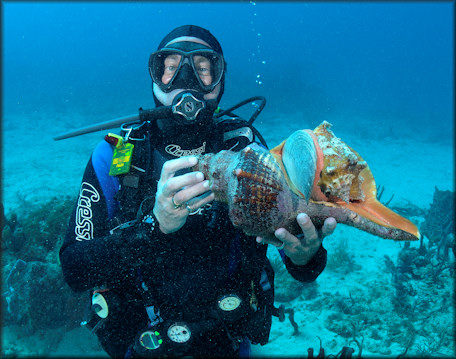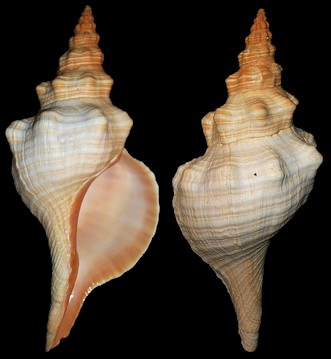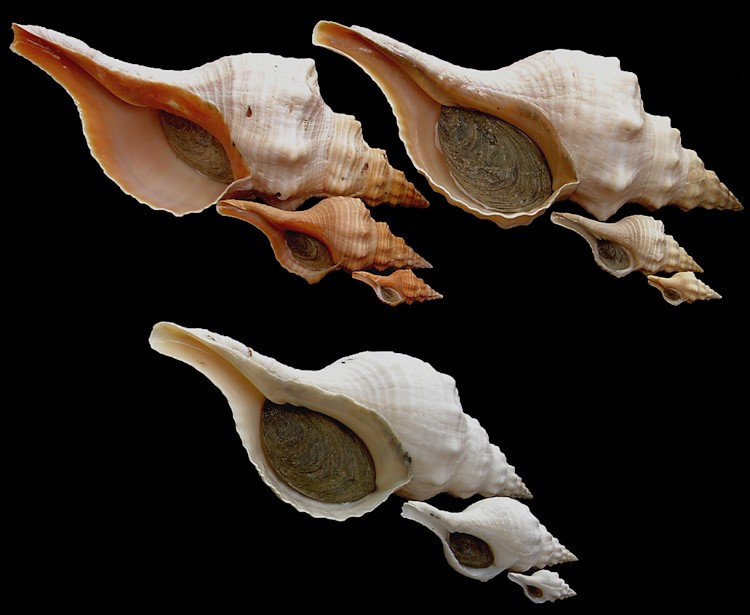|
|
|
|
|
|
|
Did you know that 14 of the 23 coastal states of the United States have an officially designated state shell in addition to the more widely known official state bird, state song, state flower, state tree, and state nickname? For example Florida's state bird is the Mockingbird, the state flower is the Orange Blossom, the state tree is the Cabbage (Sabal) Palm, the state nickname is The Sunshine State, and the state shell is the Horse Conch. In addition to having an officially designated state shell, one of the 14 states, Virginia, also has an officially designated fossil mollusk Chesapecten jeffersonius (Say, 1824), a Pliocene bivalve. Two additional coastal states likewise have officially designated fossil mollusks - Delaware with Belemnitella americana (Morton, 1830), a Cretaceus Cephalopod, and Maryland with Ecphora gardnerae gardnerae Wilson, 1987, a Miocene gastropod, but have no officially designated state shell.
Surprisingly, states with lengthy coastlines, Alaska (5,580 miles) and California (840 miles) and the unique state of Hawaii completely surrounded by water with 750 miles of coastline, have no officially designated state shell at all. The various states chose their official state shell for a variety of reasons. In most cases, the shell was simply a local favorite, was more commonly found in that state than others within the species range, or was originally described from a shell collected within the state (type locality) such as the state shells of South Carolina, Oregon, and Texas. Also in the case of South Carolina, the selected shell (the Lettered Olive, Oliva sayana Ravenel, 1834) had been named by a prominent South Carolina resident. It was named for malacologist Thomas Say of Philadelphia. Four of the states (Connecticut, Mississippi, New York, Rhode Island and Virginia) designated a shell of local importance because it is commercially harvested for food. Interestingly, the commercial harvest of New York's state shell (the Atlantic Bay Scallop) declined precipitously during the four years it took to get it officially designated. Between 1975 and 1984, bay scallops from Long Island accounted for 20 percent of the nations harvest of the species. By the time of its designation as the official state shell in 1988, the local population had been decimated by pollution. Florida's State Shell, the Horse Conch (Triplofusus giganteus (Kiener, 1840)), is by far the most imposing of all the state shells, and may attain a length of 24 inches. The species, a voracious carnivore, is common on both coasts of Florida from the shoreline down to a depth of about 100 feet. Although the shell is found throughout the southeast United States, in Texas, and northeast Mexico, it is much more common in Florida waters.
The designation of this shell was the direct result of the efforts of members of the Palm Beach County Shell Club, their friends, and State Representative William G. James of Delray Beach. The resulting House Bill (#568) was approved by a vote of 89 to 4 on May 23, 1969 and subsequently signed into law by then Governor Claude Kirk on June 18th, 1969. Representative James gave much of the credit for passage of the bill to the Palm Beach County Shell Club for its work in providing shells (and information about the species) for the desk of each legislator on the day the bill appeared on the calendar for vote. The pen used by the governor to sign the bill was subsequently presented to the club in recognition of its work. The then Speaker of the Florida House, Rep. Fred Schultz, of Jacksonville, recalled (12/29/03) receiving his specimen from House Minority Leader, Don Reed, at the time the legislation was passed. Fred still displays his specimen in his home. The designation of an official state shell, or in this particular case a state fossil, is not without its potential pitfalls. This is best illustrated by the state of Maryland which in 1984, designated as its official state fossil, a species of Ecphora from the St. Marys Formation. At the time of designation, the species was known as the Four-ribbed Ecphora, Ecphora quadricostata (Say, 1824). Thousands of brochures were subsequently printed listing this species as the state fossil. Only three years later, a paleontologist working at the National Museum of Natural History (Smithsonian Institution) in Washington, D.C. determined that the state fossil was not properly identified, and in fact, was without a proper name. In June of 1987 the species was given the name Ecphora gardnerae gardnerae (Gardner's Ecphora). Finally on October 1, 1994, the Maryland Legislature took action to formally designate Ecphora gardnerae gardnerae as that state's official fossil shell.
|
|



